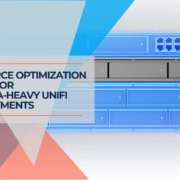The Small Business IT Cheat Sheet for 2025
The technology landscape for small businesses has fundamentally changed since 2020. What worked five years ago—basic internet, simple email, and desktop software—simply doesn't cut it in today's competitive environment. 85% of small businesses are confident technology will help their organization grow, and frankly, the businesses that understand and implement current technology trends are the ones pulling ahead of their competition.
This comprehensive cheat sheet cuts through the marketing noise to focus on what actually matters for small business success in 2025. Whether you're running a Miami startup or an established business anywhere in South Florida looking to modernize, these practical recommendations will help you make smart technology investments that deliver real returns.
Table of Contents
- 1 Internet and Connectivity: The Foundation of Modern Business
- 2 Cloud Computing and Software as a Service
- 3 Cybersecurity: Essential Protection for Modern Business
- 4 Remote and Hybrid Work Infrastructure
- 5 Hardware and Infrastructure Modernization
- 6 Business Continuity and Disaster Recovery
- 7 Financial Management and Technology ROI
- 8 Implementation Strategy and Professional Support
- 9 Technology Maintenance and Optimization
- 10 Looking Ahead: Future-Proofing Your Technology
Internet and Connectivity: The Foundation of Modern Business
Your internet connection is no longer just about email and web browsing—it's the foundation that enables cloud computing, video conferencing, AI tools, and real-time collaboration. Modern businesses require enterprise-grade connectivity to remain competitive.
Current Internet Speed Requirements
Minimum Business Standards:
- Small office (1-5 employees): 100 Mbps download, 20 Mbps upload
- Growing business (6-15 employees): 300-500 Mbps download, 50+ Mbps upload
- Larger operations (15+ employees): 1 Gbps (gigabit) or higher
Technology Choices: Fiber optic connections now offer speeds up to 10 Gbps in many areas, with business packages typically starting around $100-200 monthly. Cable internet provides 500 Mbps to 2 Gbps in most markets. 5G business internet is emerging as a viable alternative, especially for businesses needing quick deployment or backup connectivity.
Network Redundancy and Reliability
Smart businesses implement redundant internet connections to prevent costly downtime. Consider a primary fiber connection with 5G or cable backup. Many businesses find that two moderate-speed connections provide better reliability than one high-speed connection.
Modern WiFi Infrastructure
Current Standards:
- WiFi 6 (802.11ax): Now standard for business deployments, offering improved performance in high-device environments
- WiFi 6E: Provides additional spectrum for reduced congestion
- WiFi 7: Beginning deployment in early 2025, offering even higher speeds and lower latency
Business Implementation: Deploy enterprise-grade access points rather than consumer routers. Systems like Ubiquiti UniFi, Cisco Meraki, or Aruba Instant provide better security, management capabilities, and performance for business environments. Plan for at least one access point per 2,500 square feet, with additional consideration for high-density areas.
Cloud Computing and Software as a Service
Cloud-first architecture has become the standard for small businesses, offering enterprise capabilities without the infrastructure investment.
Microsoft 365 vs Google Workspace
Microsoft 365 remains the dominant choice for businesses familiar with Office applications. Current plans include advanced security features, AI-powered productivity tools like Copilot, and comprehensive collaboration capabilities through Teams. Pricing typically ranges from $6-22 per user monthly depending on features needed.
Google Workspace provides excellent collaboration tools and integrates seamlessly with other Google services. It offers competitive pricing and works particularly well for businesses that prioritize real-time document collaboration and web-based workflows.
Decision Factors: Choose Microsoft 365 if your team is already familiar with Office applications or requires advanced desktop software capabilities. Google Workspace works well for teams that prioritize simplicity and web-based collaboration. Both platforms now offer comparable security and administrative features.
The choice often comes down to what your team is already comfortable using. If your employees know Excel inside and out, switching to Google Sheets might slow them down initially. On the other hand, if you're starting fresh or value real-time collaboration, Google Workspace can be more intuitive. For help choosing the right productivity software for your specific needs, our small business software guide breaks down the options in more detail.
Cloud Storage and Backup Strategy
Modern backup strategies require multiple layers of protection:
Primary Cloud Storage: Integrated with your productivity suite (OneDrive for Microsoft 365, Google Drive for Workspace)
Business Backup Solutions: Dedicated backup services like Carbonite, Backblaze, or Acronis provide comprehensive protection for business data with faster restore capabilities
Local Backup Component: Consider maintaining local backups for immediate restore needs, especially for large files or critical systems
AI-Powered Business Tools
AI adoption has grown rapidly, with two-thirds of small business owners reporting that AI has already had a significant impact on their operations. The average small business now utilizes four AI tools.
Practical AI Applications:
- Customer service chatbots for website and social media
- AI writing assistants for marketing content and communications
- Automated scheduling and appointment systems
- Invoice processing and expense categorization
- Sales lead qualification and follow-up automation
Cost-Effective AI Tools: Most AI business tools now offer affordable monthly subscriptions ranging from $10-50 per user. Many integrate directly with existing business software, making implementation straightforward.
Cybersecurity: Essential Protection for Modern Business
Cybersecurity threats have become more sophisticated, with hackers using AI-powered attacks and targeting small businesses specifically because they often have weaker defenses.
Multi-Layered Security Approach
Endpoint Protection: Deploy business-grade antivirus and anti-malware on all computers and mobile devices. Solutions like Bitdefender GravityZone, CrowdStrike, or Microsoft Defender for Business provide comprehensive protection.
Email Security: Implement advanced email filtering to prevent phishing attacks. Most businesses benefit from solutions that include attachment scanning, link protection, and employee training simulations.
Network Security: Use business-grade firewalls with intrusion detection and prevention capabilities. Consider software-defined perimeter (SDP) solutions for remote worker protection.
Multi-Factor Authentication (MFA): Enable MFA on all business applications and accounts. This single step prevents the majority of credential-based attacks.
Zero Trust Security Model
Modern security frameworks assume that no user or device should be trusted by default. Implement identity verification for all access requests, whether from inside or outside your network. Many cloud-based services now include zero trust capabilities as standard features.
Employee Security Training
Regular security awareness training has become essential, with phishing simulations and ongoing education helping create a “human firewall.” Budget approximately $50-100 per employee annually for comprehensive security training programs.
Employee education is actually your first line of defense against cyber threats. Most successful attacks happen because someone clicked something they shouldn't have or shared information they should have kept private. For detailed guidance on protecting your business from the most common security risks, our guide on reducing data breaches caused by employees covers the practical steps you need to take.
Data Privacy Compliance
Understand your compliance requirements based on your industry and customer base. GDPR, CCPA, and other privacy regulations require specific data handling procedures. Many cloud services now include compliance tools to help manage these requirements.
Remote and Hybrid Work Infrastructure
Remote work capabilities are no longer optional—they're a competitive advantage for attracting talent and maintaining business continuity.
Communication and Collaboration Platforms
Video Conferencing: Professional platforms like Zoom, Microsoft Teams, or Google Meet provide reliable video quality, screen sharing, and integration with other business tools.
Team Collaboration: Tools like Slack, Microsoft Teams, or Asana help maintain team communication and project coordination across distributed teams.
Document Collaboration: Cloud-based document editing and sharing ensures everyone works with current versions and can collaborate in real-time.
Remote Access Solutions
VPN Services: Business-grade VPN solutions provide secure remote access to office resources. Consider cloud-based VPN services that scale easily and provide better security than traditional hardware VPNs.
Remote Desktop Solutions: Tools like TeamViewer Business, LogMeIn, or Windows Remote Desktop enable secure access to office computers and applications from any location.
Cloud-Based Applications: Prioritize software that works entirely through web browsers, eliminating the need for complex remote access configurations.
Employee Productivity and Monitoring
Demand for employee monitoring software has increased significantly, with global demand 58% higher than pre-pandemic levels. Modern solutions focus on productivity insights rather than surveillance, helping managers understand workflow bottlenecks and optimize team performance.
Hardware and Infrastructure Modernization
Computer and Device Standards
Minimum Business Computer Specs:
- Processor: Intel i5 or AMD Ryzen 5 (current generation)
- RAM: 16 GB (minimum), 32 GB recommended for power users
- Storage: 512 GB SSD minimum, 1 TB recommended
- Operating System: Windows 11 Pro or macOS (current version)
Mobile Device Management: Implement mobile device management (MDM) solutions to secure and manage employee smartphones and tablets used for business purposes.
AI-Ready Infrastructure
As businesses adopt AI tools, hardware requirements have increased. AI applications benefit from additional RAM, faster processors, and occasionally dedicated graphics processing capabilities. Plan for higher specifications if your business intends to use AI extensively.
Network Infrastructure Upgrades
Ethernet Standards: Deploy Cat 6a or Cat 7 cabling to support multi-gigabit speeds. Consider power over Ethernet (PoE) to simplify installation of wireless access points and security cameras.
Network Management: Use managed switches and professional network management tools to monitor performance and troubleshoot issues proactively.
Business Continuity and Disaster Recovery
Comprehensive Backup Strategy
3-2-1 Backup Rule: Maintain three copies of important data: one primary copy and two backups, with one backup stored off-site (cloud storage).
Recovery Time Objectives: Define how quickly you need to restore operations after various types of disruptions. This determines the level of backup and recovery solutions you need.
Testing and Validation: Regularly test backup and recovery procedures to ensure they work when needed. Schedule quarterly tests of critical systems and annual full disaster recovery exercises.
Business Continuity Planning
Alternative Work Arrangements: Develop procedures for employees to work from home or alternative locations during office disruptions.
Communication Plans: Establish communication methods for reaching employees, customers, and vendors during emergencies.
Essential Systems Identification: Document which systems and data are critical for business operations and prioritize their protection and recovery.
Financial Management and Technology ROI
Technology Budgeting
IT Budget Allocation: Most small businesses should allocate 3-6% of revenue to technology expenses, including hardware, software, and support services.
Subscription Management: Track all software subscriptions and regularly review their value. Many businesses discover they're paying for unused or redundant services.
Hardware Refresh Cycles: Plan for computer replacement every 3-4 years and server replacement every 4-5 years to maintain performance and security.
Measuring Technology ROI
Productivity Metrics: Track how technology investments improve employee productivity, reduce manual tasks, or enable new business capabilities.
Customer Experience Improvements: Measure how technology enhances customer satisfaction, reduces response times, or enables better service delivery.
Cost Savings: Document expenses eliminated through automation, cloud services, or improved efficiency.
Implementation Strategy and Professional Support
Phased Implementation Approach
Phase 1 – Foundation: Secure reliable internet, implement basic cloud services, and establish fundamental security measures.
Phase 2 – Optimization: Add AI tools, enhance collaboration capabilities, and implement advanced security features.
Phase 3 – Innovation: Explore emerging technologies like advanced analytics, IoT applications, or industry-specific solutions.
When to Seek Professional Help
Look, you don't have to figure this all out on your own. Technology moves fast, and unless you're in the IT business, staying current with all these options can feel overwhelming.
IT Consulting Services: Many small businesses benefit from fractional CIO or IT consulting services that provide strategic guidance without full-time overhead costs. Think of it as having an experienced tech advisor who can help you make smart decisions without the salary of a full-time IT director.
Managed IT Services: Consider outsourcing routine IT management tasks like monitoring, updates, and basic support to focus internal resources on growing your business rather than troubleshooting printer problems.
Specialized Implementation: Complex projects like network redesigns, security implementations, or major software deployments often benefit from professional assistance. Sometimes it's worth paying an expert to do it right the first time rather than spending weeks figuring it out yourself.
For businesses in the Miami area looking to implement these technologies effectively, consider partnering with local IT professionals who understand both current technology trends and specific business requirements.
Technology Maintenance and Optimization
Regular Maintenance Tasks
Monthly Reviews: Check software subscription usage, review security reports, and update employee access permissions.
Quarterly Assessments: Test backup systems, review technology performance metrics, and evaluate new tool requirements.
Annual Planning: Conduct comprehensive technology assessments, plan hardware refreshes, and align technology strategy with business goals.
Performance Monitoring
Network Performance: Monitor internet speeds, WiFi coverage, and network equipment performance to identify issues before they affect productivity.
Software Performance: Track application response times, user satisfaction, and feature utilization to optimize your software stack.
Security Monitoring: Implement continuous security monitoring to detect and respond to threats quickly.
Looking Ahead: Future-Proofing Your Technology
Emerging Technology Considerations
Artificial Intelligence Integration: Plan for deeper AI integration in business processes, from customer service to data analysis and decision-making support.
Edge Computing: Consider how edge computing might benefit your business, especially if you handle large amounts of data or require real-time processing.
Sustainable Technology: Evaluate energy-efficient technology options that reduce environmental impact while potentially lowering operational costs.
Scalability Planning
Growth Accommodation: Choose solutions that can scale with your business growth without requiring complete replacement.
Integration Capabilities: Prioritize tools that integrate well with other business software to avoid data silos and inefficiencies.
Flexibility Requirements: Maintain flexibility to adapt to changing business needs and technology developments.
The technology landscape will continue evolving rapidly, but businesses that establish solid foundations in connectivity, security, and cloud-based operations will be well-positioned to adapt and thrive. Focus on implementing these fundamental technologies well rather than chasing every new trend.
For businesses considering a comprehensive approach to modernizing their operations, our digital transformation guide provides a strategic framework for aligning technology investments with business goals.
Regular technology assessment and strategic planning ensure your business remains competitive while avoiding unnecessary complexity or expense. Remember that the best technology is the technology that solves real business problems and delivers measurable value to your operations and customers.
At iFeeltech, we help Miami-area businesses navigate these technology decisions every day. From small startups in Brickell to established companies in Coral Gables, we've seen how the right technology choices can accelerate growth and improve operations. The key is focusing on solutions that fit your specific needs rather than trying to implement everything at once.
For personalized technology assessment and implementation guidance, consider consulting with IT professionals who can evaluate your specific business needs and recommend optimal solutions for your budget and growth objectives.











Leave a Reply
Want to join the discussion?Feel free to contribute!